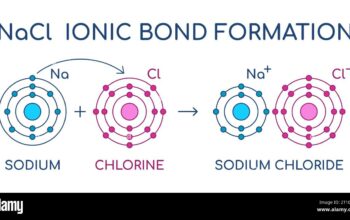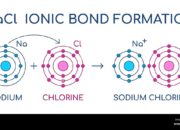In the intricate tapestry of molecular chemistry, determining the central atom within a molecule is a fundamental yet often perplexing task. One might ask: What criteria do we employ when evaluating which atom assumes this pivotal role? This inquiry may initially seem straightforward, but the challenge quickly unfurls as one considers the myriad of molecular configurations and bonding intricacies. The central atom often dictates the molecular geometry and the nature of interactions with surrounding atoms and functional groups. Hence, understanding how to identify it is essential for both academic inquiry and practical application.
Firstly, let’s introduce the concept of molecular structure. Molecules can be defined as entities composed of two or more atoms that are bonded together. Atoms within these molecules strive for stability, typically achieved via bonding configurations aimed at satisfying valence shell electron requirements. In assessing which atom serves as the central atom, it is essential to consider electronegativity, valency, and the types of chemical bonds formed.
To embark on identifying the central atom, one may start by examining electronegativity, a measure of an atom’s ability to attract electrons. Typically, the least electronegative atom in a molecule is designated as the central atom. For instance, in a molecule such as water (H₂O), oxygen, being less electronegative than hydrogen, occupies the central position. This approach is particularly beneficial for binary compounds, where two elements are combined, as the differences in electronegativity are more pronounced.
However, as one explores more complex molecules, this approach may falter. Consider a molecule like methane (CH₄) compared to ammonia (NH₃). Although carbon is the central atom in CH₄ due to its tetravalent nature, in NH₃, nitrogen assumes the central position. This divergence stems from the differing bonding capacities each atom possesses in relation to additional atoms it can bond with, further complicating our initial assessment.
Next, valency emerges as a critical determinant. Valency, or the combining capacity of an atom, directly impacts the molecule’s structure. Central atoms often exhibit the highest valency, allowing them to form multiple bonds. Thus, in many organic compounds, carbon is frequently the central atom due to its tetravalent state. Conversely, when evaluating a molecule with heteroatoms—such as sulfur or phosphorus—one must consider the potential for expanded valency, which can lead to scenarios where atoms like phosphorus can serve as central atoms despite being less ubiquitous in bonding scenarios.
Furthermore, the molecular geometry plays an indispensable role in determining central atoms, particularly in polyatomic molecules. Valence shell electron pair repulsion (VSEPR) theory posits that electron pairs surrounding a central atom will arrange themselves to minimize repulsion, leading to predictable structures. For instance, a central atom surrounded by four bonding pairs, like carbon in methane, adopts a tetrahedral shape, while sulfur in sulfuric acid (H₂SO₄) surrounded by multiple bonds leads to complex geometries including trigonal pyramidal arrangements.
Another nuance to consider involves the presence of lone pairs. Lone pairs necessitate spatial considerations, heavily influencing the molecular geometry. An atom with lone pairs may not be the central atom, but they can alter the bond angles and overall shape of the molecule significantly. Take the case of water; oxygen bears two lone pairs, complementing its central atom role while distorting the usual angles ascribed to a tetrahedral configuration to form a bent structure instead.
When faced with molecules containing transition metals, the determination of the central atom can further complicate matters. Transition metals exhibit variable valency and can participate in complex formation, often displacing other lighter elements. An example can be seen in coordination complexes where the metal acts as the central atom surrounded by various ligands. As a result, knowledge of coordination chemistry becomes imperative for an accurate identification process.
Moreover, one cannot overlook the role of hybridization in the discussion of central atoms. Hybridization refers to the mixing of atomic orbitals to create new hybrid orbitals for bonding. The type and number of hybrid orbitals formed can influence which atom takes on central roles. In ethylene (C₂H₄), the carbon atoms undergo (sp^2) hybridization, allowing for a planar structure that reveals the central nature of carbon within the molecule.
As the complexity of the molecules increases, so do the strategies required for determining the central atom. The interplay of valency, electronegativity, molecular geometry, lone pairs, and hybridization culminates in a sophisticated decision-making process. Each criterion offers vital insights, yet the true art lies in synthesizing these multifactorial aspects to achieve a holistic understanding of molecular architecture.
To summarize, while foundational guidelines exist for determining the central atom in a molecule, challenges arise as various factors interplay in intricate manners. Therefore, it is paramount for students and practitioners of chemistry to grasp these concepts thoroughly. Through careful analysis and consideration of the discussed principles—electronegativity, valency, electron pair dynamics, hybridization, and structural geometry—one can successfully identify the central atom within a myriad of molecular frameworks. Consequently, embracing this complexity not only enhances understanding but also fosters a greater appreciation of the compelling nature of chemistry itself.












